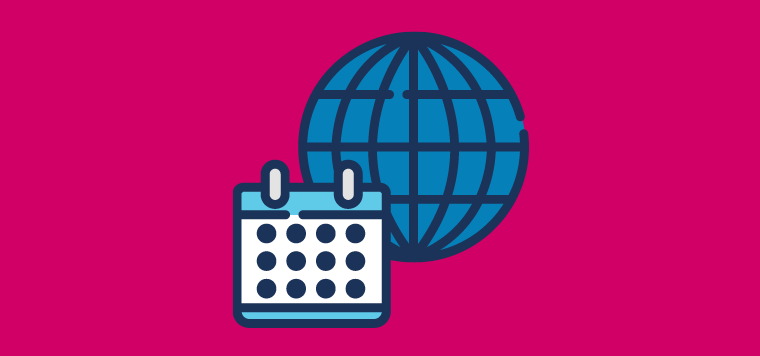Four Lessons We Learned from Security and Cleaning Industry Trends in 2020
No matter where you are in the world, you’re probably wondering what comes next and what it means for your cleaning or security business.
2020 was rough. No one knows this more than essential workers on the frontlines of the security and cleaning industries, who have never stopped working to keep the world clean, safe and secure. Although our data suggests the security and cleaning industries are slowly recovering from an initial downturn, we’re still facing new problems as businesses reopen and, in some cases, shut down again. New responsibilities are being given to your guards and cleaners in the field, and regulations from public health officials and government entities change on the daily. Taken together, this requires you to glean more from your data to stay on top of constant change and predict what might happen next.
It’s an effort you shouldn’t have to face alone. The need for a flexible business technology solution has never been more crucial to you and your customers. We always keep a close eye on what’s going on in the industry, what our customers are telling us in order to anticipate needs and rise to a challenge. We took a hard look at what has transpired over the past year and honed in on some key lessons from security and cleaning industry trends in 2020 that you can apply to your business to remain as stable as possible as we move into a new calendar year.
1. Your industries are resilient, but there are new challenges, like smaller pools of job applicants, that may impact how you operate next year.
As the cleaning and security industries look to 2021, there are best practices that should be worked into your hiring processes to find and retain workers. With hiring volume increasing and applicant volume not keeping pace, the goal is to ensure your applicant pipeline is managed efficiently so you’re converting visitors to applicants, and applicants to employees more effectively. By shortening applications and limiting it to basic information to screen job seekers, you may increase the odds of job seekers finishing applications through to completion. To help minimize lost applicants, be sure your hiring process is as efficient as possible. Respond to your applicants quickly, consider added texting or call touchpoints in addition to emailing, and work toward automating interview, onboarding and first day reminders to successfully convert applicants to hires.
2. Flexible, adaptable technology is a must-have — and now is the time to take the leap.
Technology solutions need to be flexible and adaptable. Your chosen platform should be able to meet your business needs during times when you’re able to operate business-as-usual, as well as during times of crisis. Before you implement a new tool to tackle a new, even temporary, challenge (or worse, develop a manual process to handle it), determine whether your current software solution can rise to the occasion and meet new needs. Often, the right solution doesn’t need to be invented, perhaps just reinvented. If there’s something you need your software to do, don’t be afraid to ask your account manager or current software provider’s customer support team for ideas on how to get it done with the technology you already have in place.
3. We’re living in the “next normal.” Proactively plan and prepare to adjust for evolving requirements in your contracts and new demands on your guards and cleaners.
It’s hard to admit, we’re living in the next normal now. And odds are you might need to continue to pivot to meet different or entirely new demands of your customers’ than you were pre-pandemic. Adapting your technology to new requirements and working scenarios along with paying attention to new patterns, workflows and customer needs are critical to optimizing your ongoing service delivery. While it’s still necessary to get the most out of the technology you currently have to handle short-term and intermediate-term needs, it’s equally important to lean into these times as an opportunity for determining what you may still be missing in your business software for the future. What gaps exist and what knowledge are you missing? Then, find a solution that can help you solve these problems and better anticipate and manage future scenarios, so you have tools already at your disposal when the next crisis hits.
4. Use data tools that examine things like timekeeping and turnover metrics to help keep you profitable throughout the ongoing pandemic.
Not all businesses, even businesses operating within the same industry, look at data in the same way. That’s why you need sound data combined with intelligent analytics, like those provided in business intelligence software, to decipher your data in the way that makes the most sense for your needs. Keep in mind data on its own doesn’t do you much good. You need useful data analytic tools to help turn your data into action. With solid, real-time information, you can use your data to manage the unexpected more effectively by pinpointing which contracts can help keep you profitable in the short-term, staying on top of new compliance and reporting requirements and balancing resources across your business.
As vaccines and virus mitigations are rolled out around the world in 2021, some ways of work may revert to how things were pre-pandemic, while other changes may be with us for good. Either way, prepare as much as you can for any unforeseen crises we may face in the future. But, even in — dare we say — unstable times like these, we’re able to learn from these challenges, adapt to new procedures and prepare for the “next normal” through core lessons learned. For additional reading on lessons learned from security and cleaning industry trends in 2020 and what they mean for you moving forward, download our eBook Using Flexible Software to Manage Crisis in the Security and Cleaning Industry.
